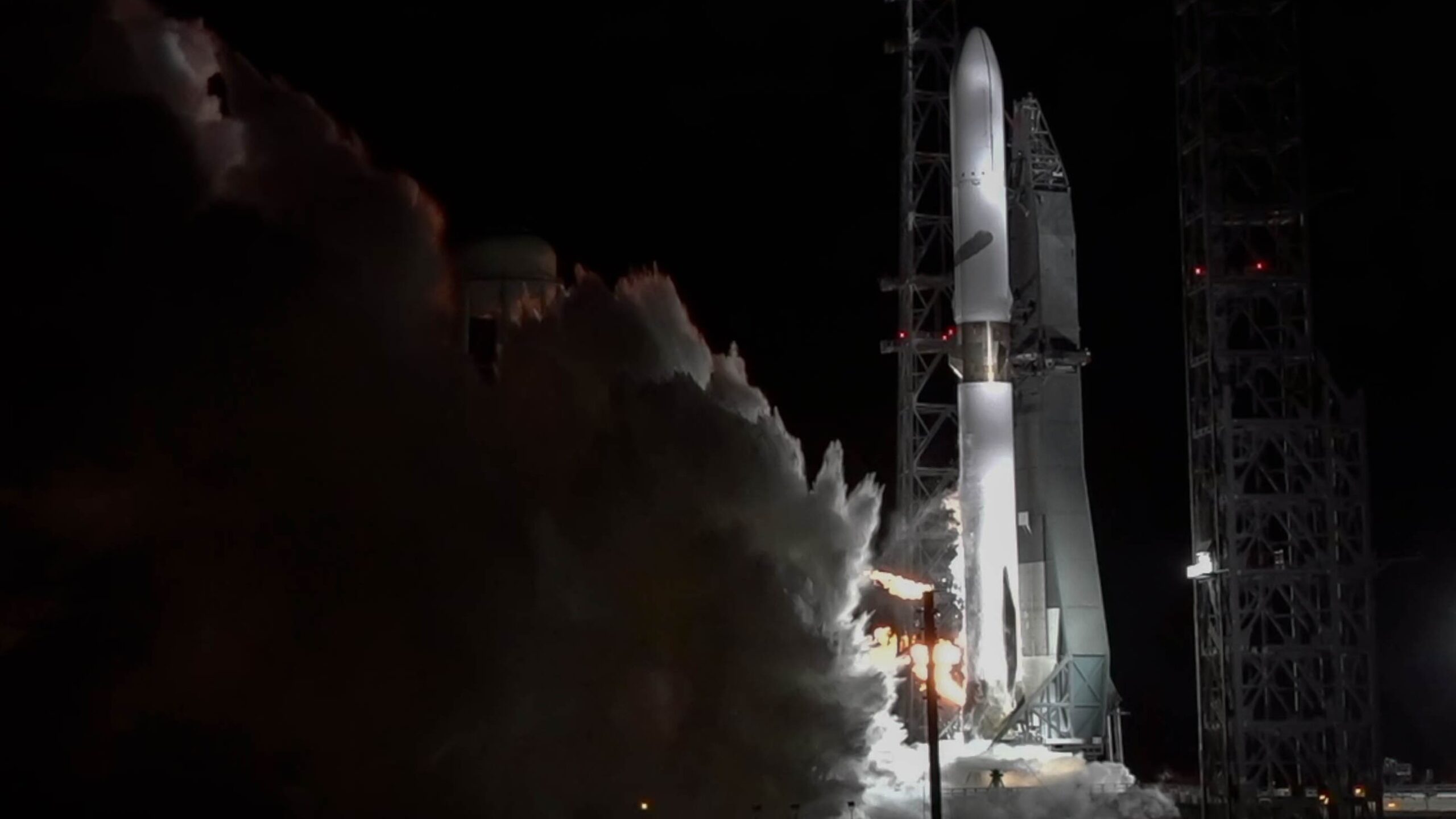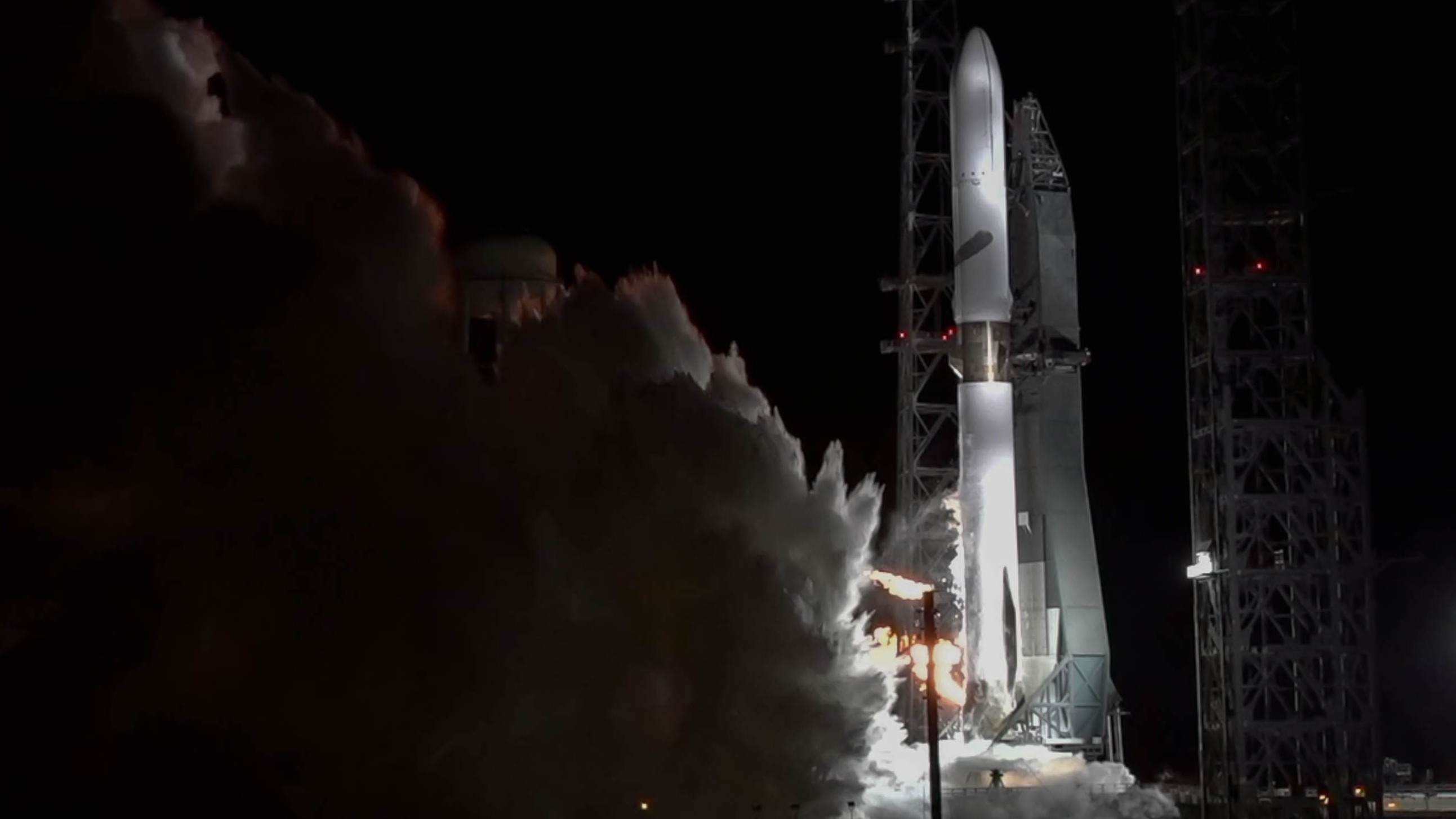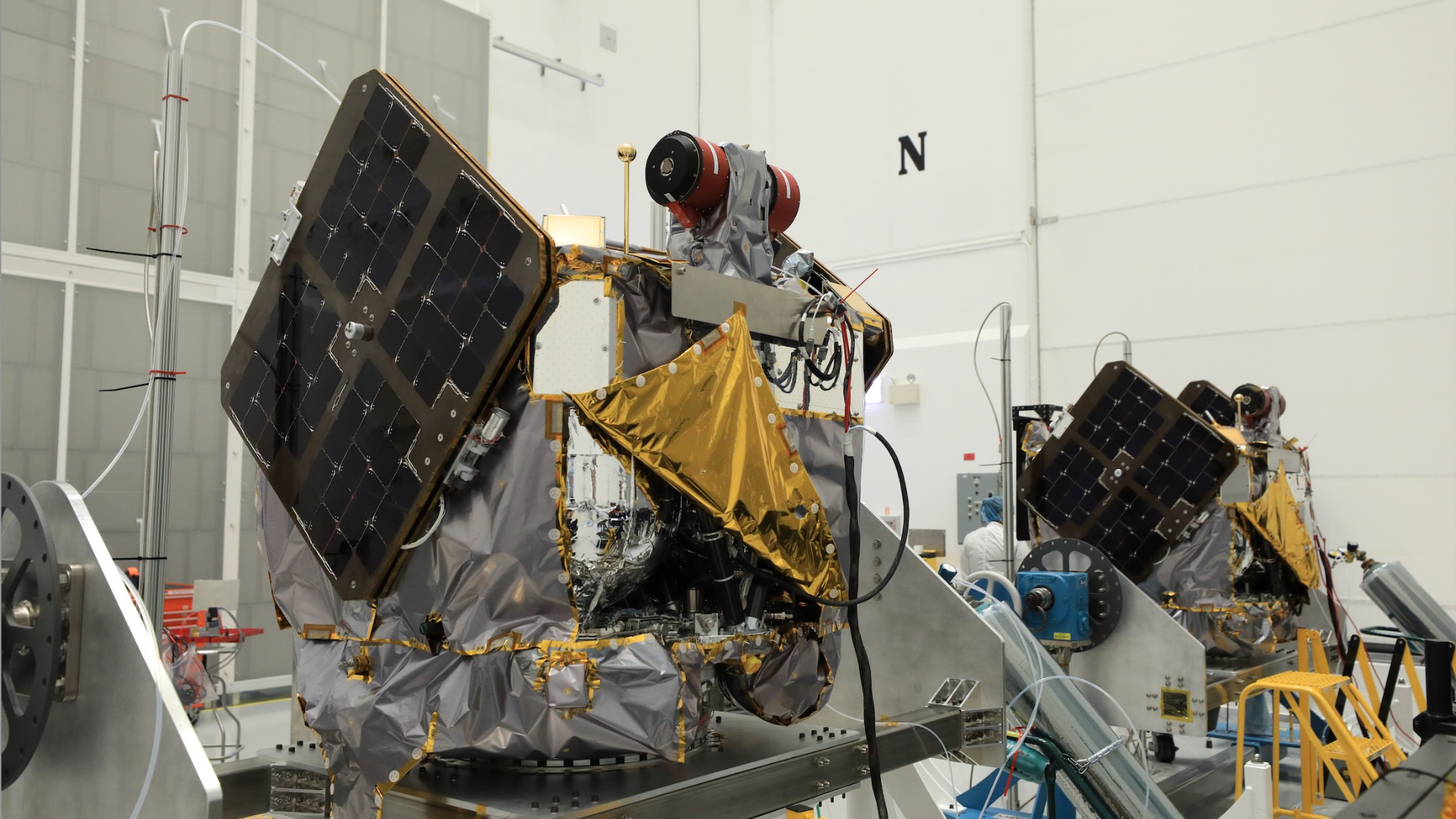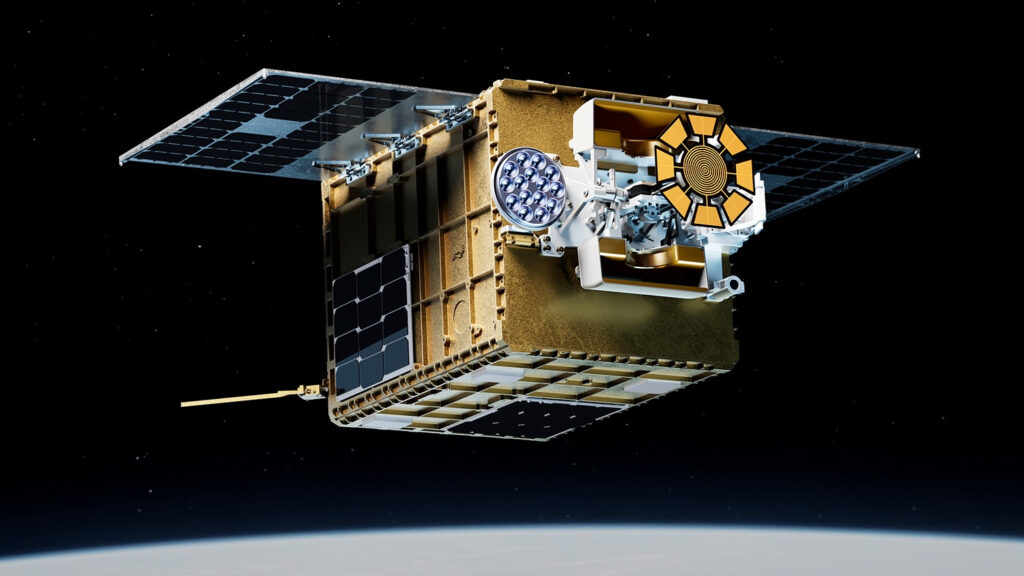Now Reading: Blue Origin fires up powerful New Glenn rocket ahead of NASA Mars mission launch (video)
-
01
Blue Origin fires up powerful New Glenn rocket ahead of NASA Mars mission launch (video)
Blue Origin fires up powerful New Glenn rocket ahead of NASA Mars mission launch (video)

New Glenn is vertical on the pad and its engines are hot.

That hot-fire test came on Thursday night (Oct. 30). In a clamped-down ignition, New Glenn’s seven BE-4 first stage engines fired up and performed as planned. Blue Origin founder Jeff Bezos posted a video of the engine test that night on X, which was followed shortly followed by Blue Origin’s own post announcing the milestone.
“All seven engines performed nominally with a 38-second duration test, including all seven engines operating at 100% thrust for 22 seconds,” Blue Origin said on X.
NASA’s ESCAPADE (Escape and Plasma Acceleration and Dynamics Explorers) probes were integrated on top of New Glenn earlier this month at Blue Origin’s Titusville, Florida, facility. The Rocket Lab-built twin spacecraft will head to orbit around Mars, where they will study the Red Planet’s magnetosphere and analyze how energetic solar wind particles interact with the Martian atmosphere.
The duo were originally slated to fly on the first New Glenn launch, which was targeted for 2024. But NASA pulled the probes from the mission due to concerns about relying on an unproven rocket to successfully launch them to Mars.
New Glenn ended up debuting in January 2025, on a test flight that successfully sent a pathfinder version of Blue Origin’s Blue Ring spacecraft to orbit.
The $80 million ESCAPADE mission is a high-profile one for New Glenn’s second launch, which will be NASA’s first mission headed to Mars since the Perseverance rover launched in July 2020, and the first interplanetary launch ever for the new rocket.

Related Stories:
Blue Origin will attempt to recover New Glenn’s first stage during the ESCAPADE launch, by way of propulsive landing on a barge in the Atlantic Ocean. The nearly 189-foot-tall (58 meters) booster failed in its landing attempt during its first launch.
Satellite communications company Viasat will fly a technology demonstration as a secondary payload aboard New Glenn on the upcoming launch. That payload is part of NASA’s Communications Services Project, which seeks out commercial partnerships to develop networking capabilities for near-Earth satellites.
Stay Informed With the Latest & Most Important News
Previous Post
Next Post
-
 012024 in Review: Highlights from NASA in Silicon Valley
012024 in Review: Highlights from NASA in Silicon Valley -
 02Panasonic Leica Summilux DG 15mm f/1.7 ASPH review
02Panasonic Leica Summilux DG 15mm f/1.7 ASPH review -
 03From Polymerization-Enabled Folding and Assembly to Chemical Evolution: Key Processes for Emergence of Functional Polymers in the Origin of Life
03From Polymerization-Enabled Folding and Assembly to Chemical Evolution: Key Processes for Emergence of Functional Polymers in the Origin of Life -
 04How New NASA, India Earth Satellite NISAR Will See Earth
04How New NASA, India Earth Satellite NISAR Will See Earth -
 05And Thus Begins A New Year For Life On Earth
05And Thus Begins A New Year For Life On Earth -
 06Astronomy Activation Ambassadors: A New Era
06Astronomy Activation Ambassadors: A New Era -
07SpaceX launch surge helps set new global launch record in 2024




















